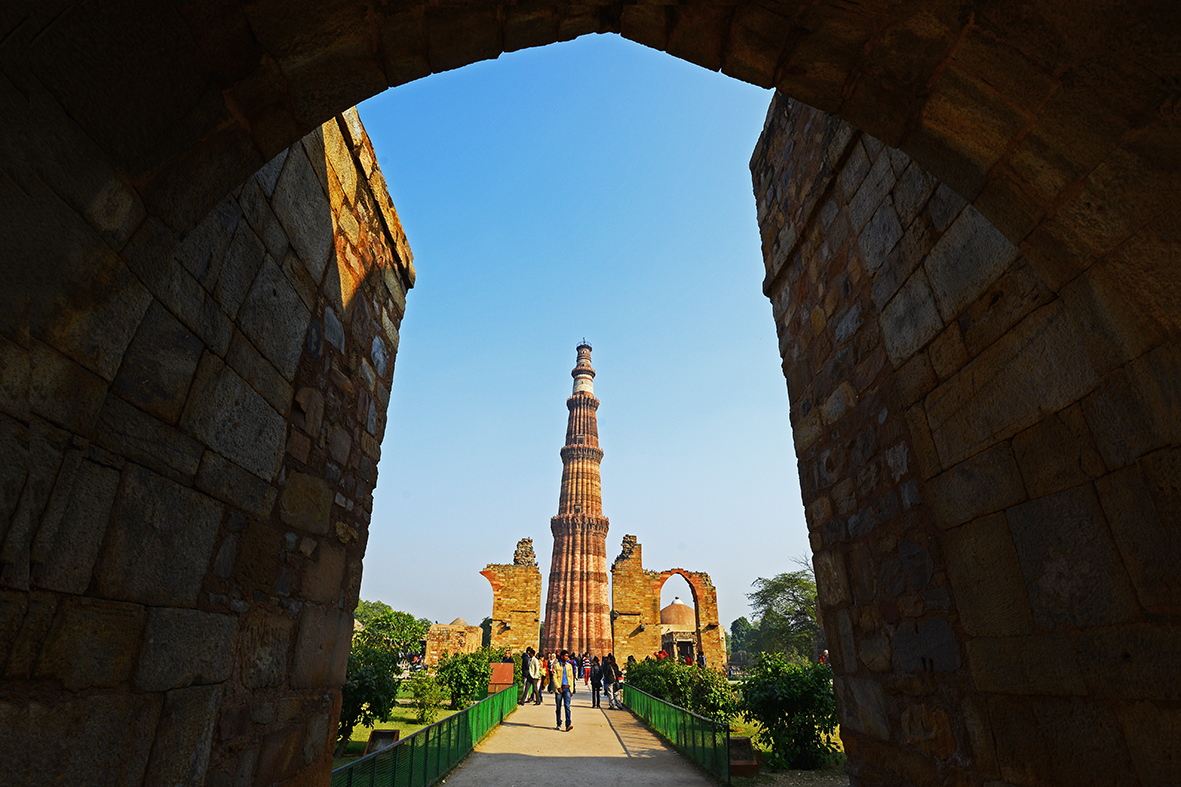When discussing the architectural heritage of Islam in India, the Taj Mahal often comes to mind. However, centuries before the Taj Mahal was constructed, India was already home to a masterpiece of Islamic architecture: the Qutub Minar.
I had the opportunity to visit Qutub Minar after concluding some business in Faridabad, Delhi, with Yogesh Kharbanda. A colleague from Pressline, a company specializing in manufacturing web printing machines for newspapers, accompanied me during my stay in Delhi. Before heading to the airport to return to Jakarta, he enthusiastically suggested visiting this historical site. "There's one more Islamic historical monument we can explore before going to the airport," he said. The day before, we had spent an entire day driving to Agra to visit the Taj Mahal.

Amid the bustling chaos of Delhi, a towering red stone minaret stands tall, narrating tales of Islamic glory from centuries past. This minaret is the Qutub Minar, a visually stunning monument rich in historical significance.
The story of Qutub Minar dates back to 1199 AD, when Qutb-ud-din Aibak, a general and the founder of the Delhi Sultanate, decided to construct a victory tower after defeating Prithviraj Chauhan, the last Hindu ruler of Delhi. Aibak aimed to commemorate his triumph with a grand and enduring structure. He chose the site of the Lal Kot fortress, the former center of Chauhan's power, as the location for this monumental tower.
Constructed using red sandstone and marble, Qutub Minar is adorned with intricate carvings of Quranic verses and exquisite geometric patterns. The tower comprises five stories, each separated by a circular balcony embellished with delicate ornaments. With a base diameter of 14.3 meters, it tapers to 2.75 meters at the top and stands at an impressive height of 73 meters, making it one of the tallest stone towers in the world.
Surrounding Qutub Minar are several other historical structures, including the Quwwat-ul-Islam Mosque, the first mosque built in India. This mosque exemplifies a unique blend of Islamic and Hindu architectural styles.
In the 14th century, Qutub Minar suffered damage and was later restored by Firoz Shah Tughlaq, a ruler from the Tughlaq dynasty. He not only repaired the tower but also added its final floor, perfecting its structure and ensuring its endurance through the centuries.
Qutub Minar stands as a symbol of Islamic grandeur in India and a testament to the cultural fusion of Hindu and Islamic traditions during that era. In 1993, it was designated as a UNESCO World Heritage Site.
According to records, the tower attracts approximately 3 million visitors annually from around the globe. People come not only as tourists but also as cultural pilgrims, drawn to its historical and architectural significance. (*)













